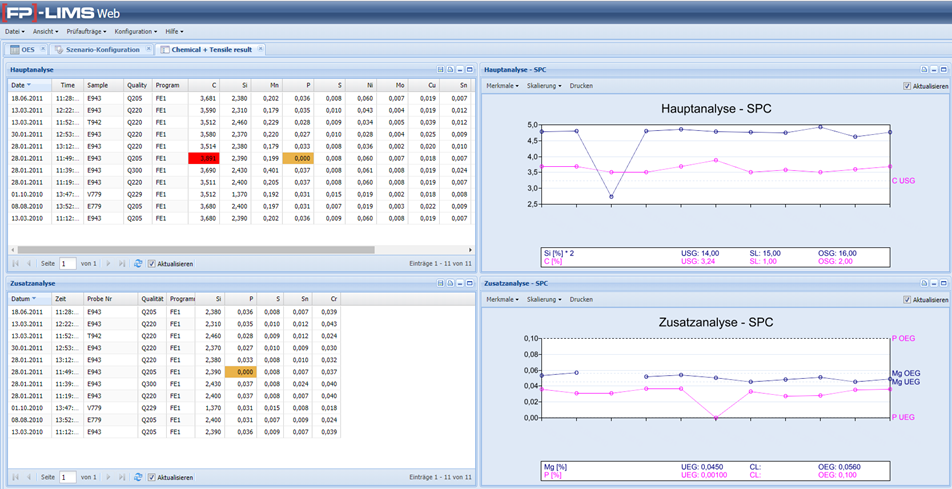- Lims Direct Establishment
- Fsis Usda Lims Sample Results
- Lims.flaes.org
- Lims Redding
- Limso.net
- Www.limso.net
A LIMS is a software solution used to manage laboratory test samples and their associated data. More than just a system for tracking tests, modern LIMS solutions also streamline and standardize lab operations like reporting and workflows. A LIMS (laboratory information management system), also referred to as LIS (laboratory information system) manages and tracks samples and associated laboratory data while also streamlining overall processes and activities within a lab.
January 07, 2019
The advent of technology has dramatically changed lab operations. A Laboratory Information Management System (LIMS) has been an enabler of such change, transforming manual lab operations to software managed workflows and systems. It has successfully eliminated the need for manually recording the data in paper notebooks and spreadsheets, thereby making laboratories more efficient.
Laboratory Information Management System (LIMS): An introduction
A Laboratory Information Management System (LIMS) is a software-based solution that can help labs effectively manage laboratory data, thereby increasing the efficiency of various lab operations. A LIMS acts as an interface between the laboratory staff and the database where all the information is stored.
LIMS entered the market of supporting technologies in the 1980s. The first in-house LIMS was developed by large organizations for handling some of the basic lab operations like data retrieval and reporting. Later, the remarkable progress in Information Technology, specifically the introduction of a personal computer, gave birth to the commercial client/server LIMS. Today, a LIMS has become a necessity for every lab interested to electronically manage data, automate workflows, and enhance efficiency.
Why use a LIMS?
In today’s competitive era, every other lab is striving to produce the best results possible from a technical point of view. They need to reduce turnaround time, enhance customer satisfaction, and meet the regulatory requirements of their industry.
The main focus of a LIMS is to increase the efficiency of lab operations by reducing manual tasks. Each LIMS available in the market today may vary from each other depending on the LIMS vendor and the target industry. Some of the core lab functionalities that a LIMS typically takes care of includes:
Lims Direct Establishment

- Sample management
• Storage management
• Lab inventory management (reagents, analytical instruments, etc.)
• Workflow management
• Work allocation
• Report and Invoice generation
• Instrument integration
How to choose a LIMS?
Selecting a LIMS that best meets your requirements has become difficult than ever due to a number of options available in the LIMS market. So how do you go about deciding which LIMS is right for your lab?
Some of the factors to consider while choosing a LIMS are:
Industry Type: The type of industry under which your lab functions or your lab type (QA/QC or R&D) is a very important factor to consider while choosing a LIMS. This can help you decide the LIMS that will support your lab environment. There is a diverse range of LIMS available, most of which are customized per the workflows or the regulations followed by the various industries (for example, food and beverage, cannabis, clinical research, etc). Therefore, every aspect of the lab including data management, workflow automation, and regulatory requirements should be considered while selecting a LIMS.
IT Infrastructure: The decision to implement a LIMS typically depends on the coordination between different departments, involving not only the lab but also the IT department. It is important that the IT department must have the infrastructure to support the LIMS deployment. Alternatively, the lab can consider choosing a cloud-based LIMS that can be easily accessed, 24×7, using any internet-ready device, without support from IT personnel.
Budget: It is one of the most important factors that govern the LIMS selection process. The core responsibility of a lab is the generation of quality data under the estimated budget and time. It is advisable to choose a LIMS that does not require huge capital investment.
In short, choosing a LIMS requires careful consideration of the various factors that could influence its successful and sustainable deployment and use.
Benefits of a LIMS
Fsis Usda Lims Sample Results
- Some of the key benefits of a LIMS are:
• Enables workflow automation, thereby eliminating human errors
• Enables flexible configuration/setup
• Centralizes access and storage of quality control data
• Facilitates labs to meet regulatory compliance
• Tracks laboratory inventory
• Enables downstream data analysis
Lims.flaes.org
Conclusion
Lims Redding
Industries, such as food and beverage, healthcare, cannabis, clinical, biobanking, etc., are evolving with time. The challenges that arise in the path of these industries with respect to data management are also never-ending. Massive amounts of data can cause significant data management problems and solutions are needed to manage it. One such data management solution is a LIMS. However, selecting a LIMS is not an easy job. It requires careful consideration of several factors such as requirements, budget, IT infrastructure, etc. A well-defined LIMS is central to a range of lab operations which ensures enhanced productivity and high-quality data. Additionally, it should be able to manage various documents required during audits. To conclude, a LIMS is a solution that can yield great profits if employed correctly.
Limso.net
Comment | Share |
Www.limso.net
